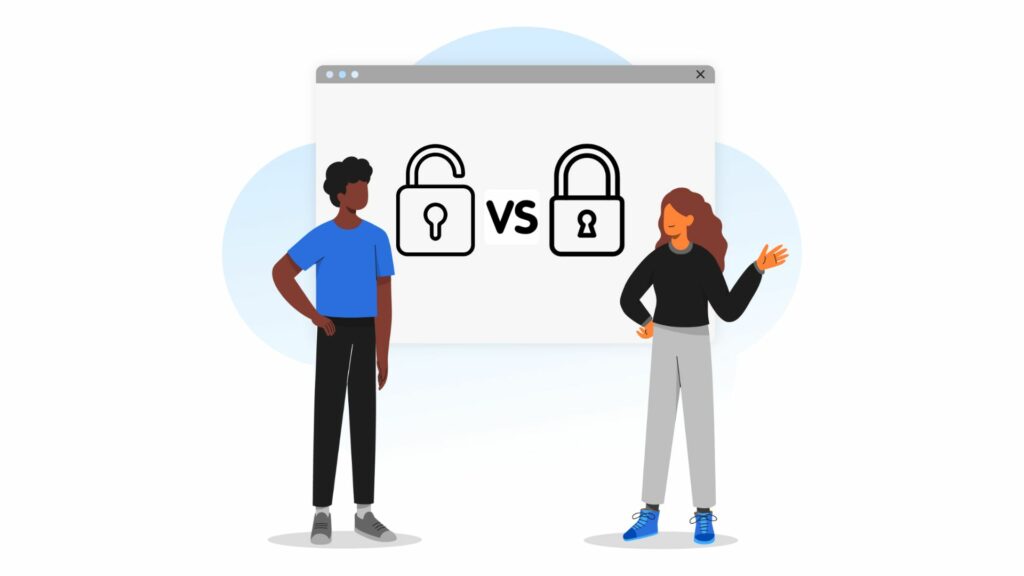Open-source software, also known as free software, is becoming more common in today’s digital world. It brings both good and tough things for users and developers. Let’s explore this type of software, find out its advantages, deal with any problems it might have, and discover the best ways to use it.

Understanding Open-Source Software
Open-source software refers to programs whose source code is freely available for anyone to view, modify, and distribute. Unlike proprietary software, which is owned and controlled by a single entity, free software fosters collaboration and community-driven development.
The Benefits of Open-Source Software
Cost-Effectiveness
One of the primary advantages of open-source software is its cost-effectiveness. Since the source code is freely accessible, users can download and use the software without incurring licensing fees.
Transparency and Security
With open-source software, the source code is transparent, allowing users to inspect it for vulnerabilities and security flaws. This transparency enhances security and fosters trust among users.
Customizability and Flexibility
Unproprietary software offers unparalleled customizability and flexibility. Users can modify the source code to suit their specific needs, tailoring the software to meet unique requirements.
Community Collaboration
Open-source projects thrive on community collaboration. Developers from around the world contribute to the improvement and enhancement of open-source software, leading to rapid innovation and continuous improvement.
Long-Term Viability
Since free software is not dependent on a single vendor or entity, its long-term viability is assured. Even if a particular project’s development stagnates, the open-source nature allows others to fork the project and continue its evolution.
Challenges Associated with Open-Source Software
Quality Control
While the collaborative nature of open-source development can lead to rapid innovation, it also poses challenges in terms of quality control. Ensuring the reliability and stability of open-source software requires rigorous testing and review processes.
Compatibility Issues
Integrating non -non-proprietary software into existing systems can sometimes lead to compatibility issues. Differences in coding standards and dependencies may necessitate additional effort to ensure seamless integration.
Support and Documentation
Unlike proprietary software, which often comes with dedicated support and documentation, non-proprietary software may lack comprehensive support resources. Users may need to rely on community forums and documentation for assistance.
Security Risks
While free software is transparent and subject to community scrutiny, it is not immune to security risks. Vulnerabilities in open-source projects can be exploited by malicious actors, highlighting the importance of timely updates and patches.
Best Practices for Utilizing Open-Source Software
Regular Updates
Stay proactive in keeping open-source software up to date with the latest patches and security fixes to mitigate potential vulnerabilities.
Community Engagement
Participate in the open-source community by providing feedback, reporting bugs, and contributing code to enhance the quality and functionality of projects.
Due Diligence
Before integrating free-source software into your environment, conduct thorough research to assess its suitability, reliability, and licensing implications. Additionally, consider factors such as compatibility with existing systems, community support, and potential long-term maintenance requirements. Moreover, engage with stakeholders to gather input and feedback on the proposed software solution. Furthermore, evaluate alternative options and weigh the pros and cons before making a final decision. Finally, establish clear guidelines and procedures for the implementation and use of the selected software to ensure compliance with organizational policies and objectives.
Documentation and Training
Invest in comprehensive documentation and training resources to empower users with the knowledge and skills needed to effectively utilize this software. Additionally, ensure that users have access to detailed guides, tutorials, and training materials that cover all aspects of the software’s functionality. Moreover, regularly update and expand the documentation and training resources to keep pace with changes and updates to the software. Furthermore, provide ongoing support and assistance to users to address any questions or issues that may arise during their use of the software.
Risk Management
Implement robust risk management practices to address security concerns and ensure compliance with regulatory requirements when using free software in sensitive environments. Additionally, carefully assess the potential risks associated with the use of free software and establish appropriate controls to mitigate these risks. Moreover, regularly monitor and review the security posture of the software, and promptly address any vulnerabilities or issues that may arise. Furthermore, ensure that all stakeholders are aware of their roles a
Conclusion
Free software presents a wealth of opportunities for organizations and individuals seeking cost-effective, customizable solutions. By understanding the benefits, navigating challenges, and adhering to best practices, users can harness the power of free software to drive innovation and achieve their goals effectively and efficiently. Embrace the open-source ethos and unlock the full potential of collaborative software development.

